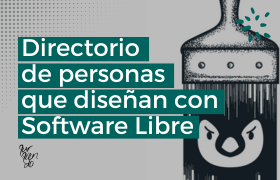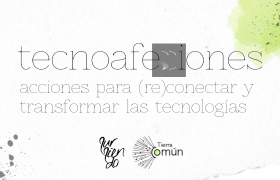Technological biodiversity to jump the walled gardens of the Internet
[this post was translated by The Common Understanding Project… thanks!]
[leer en español aquí]

The dream of the Internet was to be free. Isn’t that everyone’s dream? Without going into detail about what it means to each of us, being free (feeling free) is one of life’s great purposes.
It turns out we take a handful of cables, antennas, modems, servers, protocols, etc., and we personify them. We make them dream of being “free.” But, to many of us, the Internet isn’t just a tool or infrastructure, but an immaterial thing that builds social relationships. Yes, we know the dangers of the Internet. Every day, we try to keep our privacy and intimacy safe in a medium currently ruled by market laws and government control that are far removed from the dreams of those who, more than forty years ago, saw it as a space in which shared knowledge had no limits.
The great confluence of prior “inventions” that ended up becoming the network of networks has also been marked by military, academic, and economic “development”. Each of those groups has diverse, and sometimes antagonistic, interests, but are “forced” to coexist on the Internet one way or another.
Among all these, the ones that interest us are the groups (which are also diverse but more “amorphous”) that, every day, keep building an environment on the Internet that values people and collective processes, privacy and anonymity, the circulation of knowledge, and mutual learning.
Are there still such groups in a technological world marked by “innovation,” startups, lobbyists and the buying and selling of data?
 Yes. We are still capable of being indignant about technological authoritarianism and building and feeding free and federated networks. There are still those of us who believe in forums, chat channels, and mailing lists where we can discuss and learn. There are still those who think about free infrastructure, and about cooperative and autonomous technologies. There are still those who work for appropriation and technological rewriting.
Yes. We are still capable of being indignant about technological authoritarianism and building and feeding free and federated networks. There are still those of us who believe in forums, chat channels, and mailing lists where we can discuss and learn. There are still those who think about free infrastructure, and about cooperative and autonomous technologies. There are still those who work for appropriation and technological rewriting.
This universe of options that still exists, and that are more necessary each day, is what we call technological biodiversity.
Yes, the Internet is today coopted by private infrastructure we can’t do without (let’s be optimistic and think: just for now!) But even as we continue to use those cables and fibers, we can go beyond the private platforms that “everyone” is on (!) and find each other to build other digital (and analog) spaces where we can feel more free, to inhabit them.
“..we’re experiencing a progressive centralization of the Internet, and it’s more and more pressing. This centralization means that even with the incredible variety of debate spaces, plazas, and agoras that exist in cyberspace, we stay in the walled gardens where one of the worst illusions is created: the illusion of community” [we read around 2015 on a friendly blog].
The Internet built on technological biodiversity is “bio” because it also recalls that the materials and “iron” used to interconnect us come from nature, which we’re a part of, and which, as society, we’re devastating in the interest of consumption, planned obsolescence and perceived obsolescence.
And then, disobeying the orders of every ad that puts the most “advanced” device in front of us, this other technology–popular, underground, autonomous, or whatever it’s called–invites us to question that “advance,” to take back our devices… invites us to touch, disassemble, play with it, and learn what it’s about… It invites us to think beyond simple equipment and to construct ourselves together so those tools can enhance social relationships, and relationships with our natural surroundings that allow us to not abuse them, and to stay “connected.”
Yes, we’re among those who use cell phones and computers. And we’re also among those who who reuse, repair, and add to ways of critically questioning this equipment. In spite of all the daily news that invites us to believe otherwise, we’re also among those who think that digital tools help to create social relationships.
To be sure, to do this, we need to go through the construction and use of tools that accompany our liberating (and tecnofeminist!) social processes. So, it makes a difference which digital tool or server we use for our communications with others.
This crazy modern life is more and more complex. There’s little time for what’s important, because we can hardly take care of what’s urgent. These proposals for technological biodiversity are already urgent and we’re only a few digital steps from walking towards those that already exist, find each other, and smiling on each other there.




